Skin Pigmentation, Freckles, Melasma, Sunspots – Causes, Removal and Treatment – Auckland NZ
Living in Auckland, NZ we experience a high level of sun exposure, and many of us experience sun damage to our skin such as freckles, sun spots and age spots. At Palm Clinic, we offer a range of skin pigmentation treatments – from laser treatment to advanced skincare – for those looking to reduce the signs of sun damage.
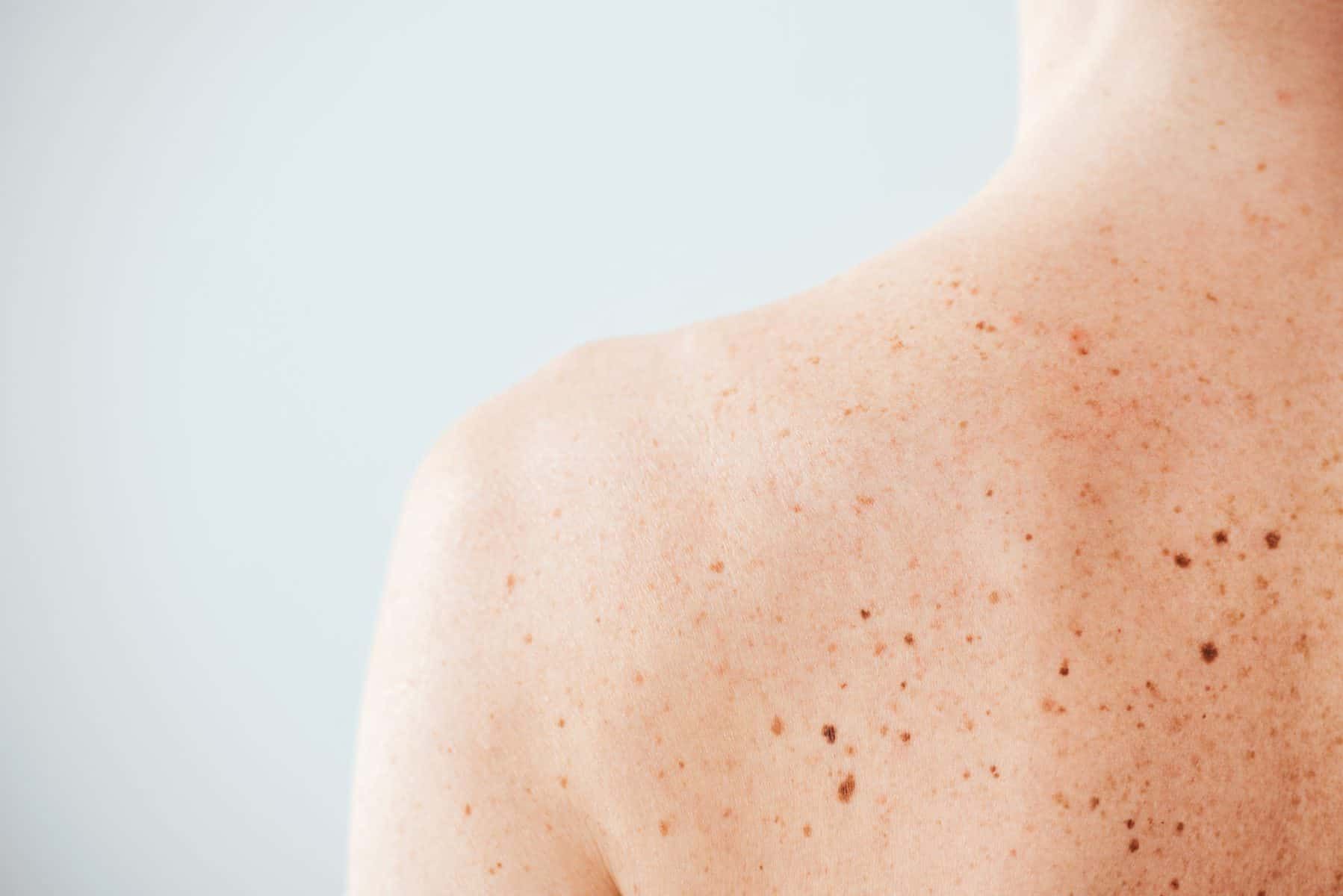
- Aesthetic Concerns
- Ageing
- Frown Lines
- Bags Under Eyes
- Drooping Eyes
- Crow’s Feet
- Sagging Face
- Loss of Facial Definition
- Thinning Lips
- Upper Lip Lines
- Bulging Arm Veins
- Skin
- Skin Pigmentation
- Rosacea / Facial Redness
- Acne Scarring
- Moles and Skin Tags
- Dull Skin
- Sweat
- Excessive Sweating
- Fat Pockets
- Abdomen
- Thighs
- Ankles
- Arms
Skin Pigmentation Causes
Skin pigmentation is caused by melanin production, which is triggered by hormonal changes (particularly oestrogen) and sun exposure.
Melanin is the brown pigment in the skin, which is produced when exposed to the sun and causes skin to tan, freckle, or produce sun spots or blotchy areas of skin pigmentation (melasma). Skin that has experienced sun damage over the years is more likely to experience changes in skin pigmentation in later life such as sun spots, age spots and brown spots.
Darker skin tones have a higher amount of melanin than fairer skin tones and tend to experience more skin pigmentation issues but have fewer visible signs of ageing.
Skin Pigmentation Removal and Treatment
At Palm Clinic, skin pigmentation treatments are tailored to the specific skin pigmentation concern. Below we explore the most common concerns and their treatments.
Sun Spots Treatment | Freckles Treatment
Many people have freckles or mottled brown spots and patches on their skin. Freckles are caused by sun exposure but they are also hereditary and are often seen in red heads and younger people.
Freckles or sun spots treatment is easily attained with medical grade Pulsed Polychromatic Light (PPL) or ResurFX™ Laser Skin Resurfacing therapy. Freckles and sun spots may reappear with further sun exposure so it is very important to apply a good sunscreen following treatment to maximise and protect your results.
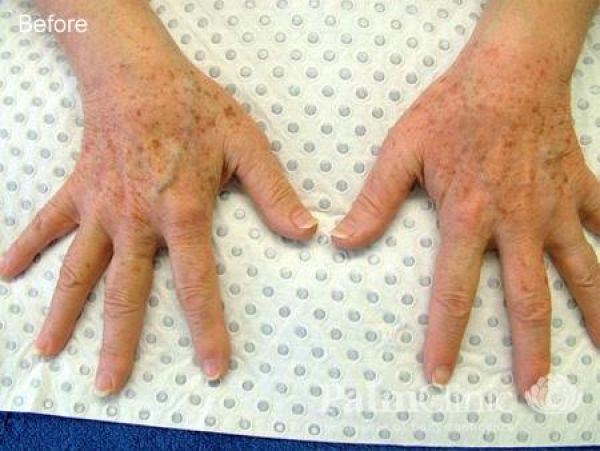
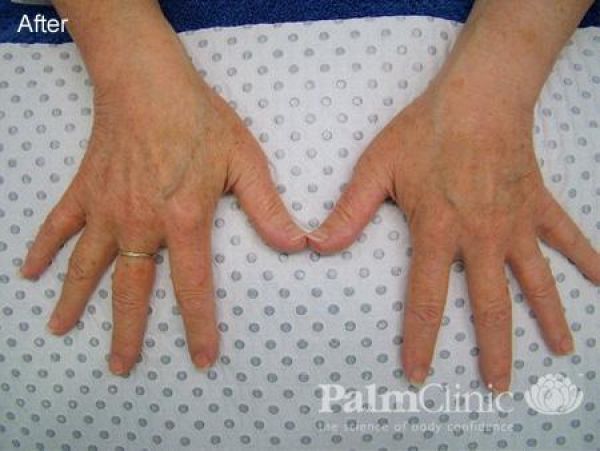
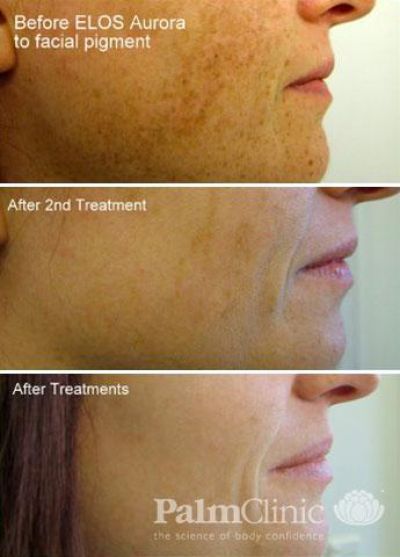

Before and after treatment with light therapy. Individual results may vary.
Post-Inflammatory Hyperpigmentation Treatment
Post inflammatory hyperpigmentation (PIH) occurs after injury to the skin and is far more prevalent in darker skin types such as Maori, Indian, Asian and Pacific Islanders.
PIH appears as a darker area of skin over an injury and is due to excess melanin produced as a result of inflammation. It is often seen as a result of acne or around a surgical scar.
Typically, inflammatory hyperpigmentation resolves over several months but it can persist for 1-2 years and, in rare instances, may be permanent. Treatment is usually conservative, as laser treatments can risk aggravating the inflammatory hyperpigmentation. Our skin therapists are skilled at using medi-facials or chemical peels in the clinic, and active skincare at home to help reduce PIH.
The mainstay is to use a good quality SPF to reduce UV exposure, a topical vitamin A and vitamin B to inhibit further pigment production, and a lightening cream, such as hydroquinone. Your Palm Clinic skin therapist will assess your skin and prescribe the appropriate skincare.
Other Skin Pigmentation Causes
Age spots (liver spots) are larger flat skin spots on the face and hands that appear in middle age after years of sun damage. The medical term for age spots is ‘solar lentigines’. They are caused by an accumulation of the cells that make pigment. They fade in winter but don’t fully disappear.
If the brown marks are scaly, they may be solar keratoses (pre-cancerous sun damage) or seborrheic keratoses. It is also important to distinguish them from early malignant melanoma (lentigo maligna). If a dark spot has appeared or changed recently, has an irregular border, has more than one colour, or you have any concerns, see your dermatologist or GP for a skin check.
Skin pigmentation should always be protected from the sun. They can be faded with creams containing hydroquinone, alpha-hydroxy acids, retinoids and vitamin B. Stronger, quicker options to fade or remove spots are chemical peels (which may include glycolic acid, azelaic acid, vitamin A), Dermapen and many lasers.
Age Spots Treatment
Palm Clinic’s most effective treatment option for age spots or freckles is Pulsed Polychromatic Light Therapy (PPL). This medical grade PPL reduces the top layers of pigment, fading the brown spot without reducing the number of melanocytes. Good sun protection is essential after treatment to prevent brown spots darkening again. These lasers also reduce red veins and promote natural collagen formation.
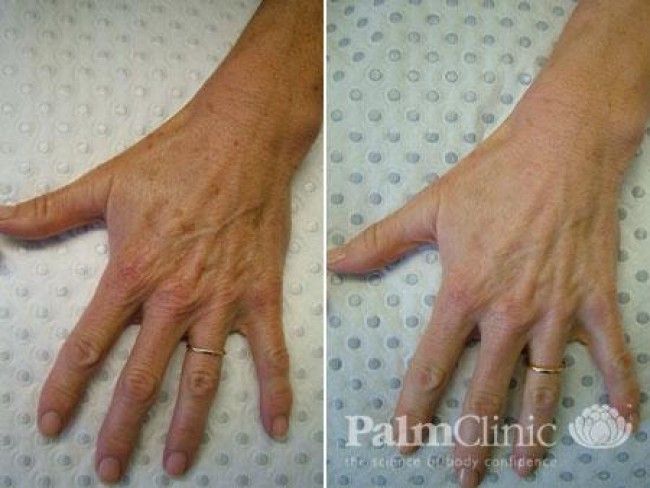

Age spots treatment on the hands and face using light treatment. Individual results may vary.
Alternatively, the revolutionary ResurFX™ Laser Skin Resurfacing treatment which partially resurfaces the skin can also be used to remove brown spots. Fine lines and skin texture are significantly smoothed at the same time improving the overall appearance of the skin.
Melasma Treatment
Melasma is the blotchy appearance of brown skin pigmentation on the face.
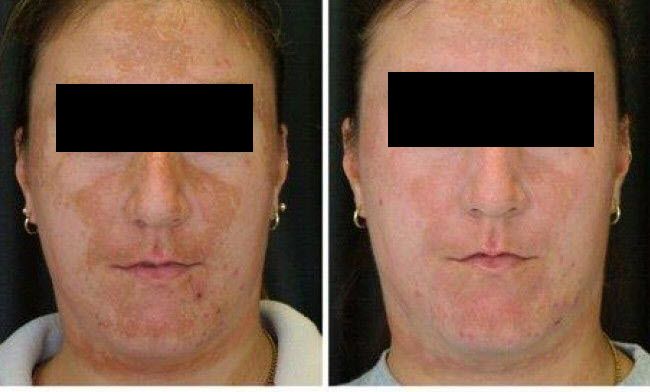
Results after one melasma treatment using laser skin resurfacing Auckland. Further improvement can be made after a second treatment.
Melasma – also known as chloasma ‘pregnancy mask’ – appears as blotchy pale brownish pigmentation on the face, especially forehead, cheek and upper lip. It is more common on darker skin types. It is especially common in women aged 30 and over, in pregnant women, and in those taking the oral contraceptive pill or hormone replacement therapy.
Sun exposure following some cosmetics can cause a phototoxic reaction where the chemical substance absorbs UV light. The resulting pigmentation extends where sun and cosmetic use have coincided, for example down the neck.
Melasma is more stubborn and unpredictable to treat than freckles or age spots because the melanocytes have become sensitised and continue to produce extra pigment with even the slightest hint of sun. Sun protection is an essential part of treatment.
Hormonal changes can aggravate melasma, so after discussion with your GP, you may consider switching your form of contraception.
Our skin therapists will assess your skin and advise on the best medical grade skincare suited to your skin type. These topical creams include a quality SPF, vitamin A, vitamin B, vitamin C and a lightening cream. These all play a different role in helping to reduce pigmentation. They will also prescribe a series of medi-facials or chemical peels, which are a gentle skin pigmentation treatment.
Laser therapy is best avoided for melasma as it will often provide an initial improvement followed by a recurrence.
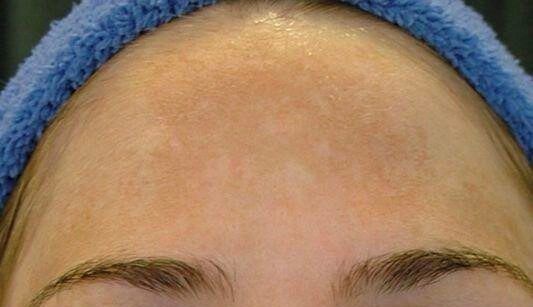
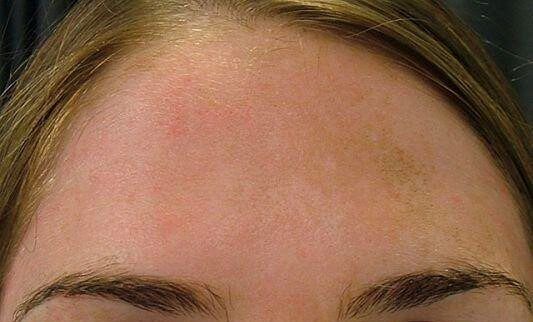
Melasma treatment before and after laser skin resurfacing Auckland
Seborrhoeic Keratosis

Seborrhoeic keratosis is often referred to as a senile wart. These benign skin growths can appear anywhere on the body but are most common on the trunk and in areas where there is skin friction such as under the breasts and in the armpits.
Seborrhoeic keratosis is easy to treat as although they are generally raised above the skin surface they do not penetrate deep into the skin. At Palm Clinic we use a procedure called Surgitron which uses radiofrequency to shave the growth off the skin leaving a grazed area which typically heals without a scar.
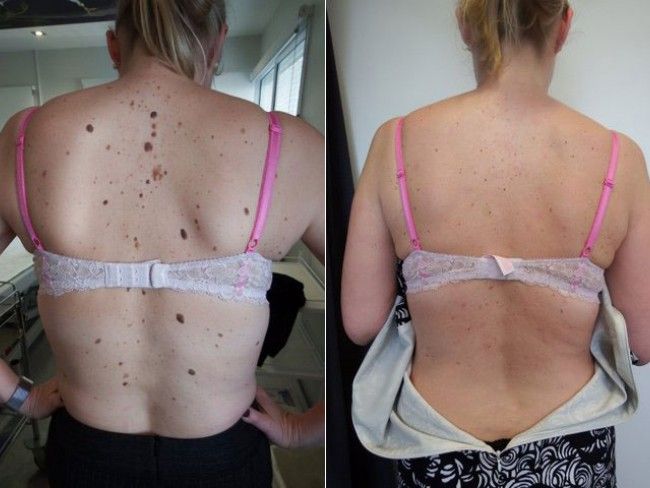
Seborrhoeic keratosis removal with Surgitron
Skin Pigmentation, Freckles, Melasma, Sunspots – Before & After Photo
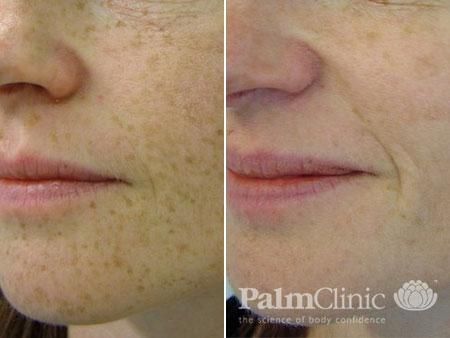
For more before and after photos of pigmentation treatment please visit our gallery.
FAQ About Melasma
There is a genetic predisposition to melasma but triggers may include:
- Hormonal contraceptive including the oral contraceptive pill and injected progesterone.
- Sun exposure
- Antibiotics and many other medications which are photosensitising (including those commonly prescribed for acne).
- A phototoxic reaction to scented or deodorant soaps, toiletries and cosmetics.
- Pregnancy from hormonal change – often fades a year later but can persist.
- Unknown factors
Melasma usually affects women; only 1 in 20 affected are male. It generally starts from the age of 30. Melasma is more common in people that tan easily or have naturally darker skin.
Melasma affects the forehead, cheeks and upper lips resulting in macules (freckle like spots) and may then spread causing larger more confluent patches. Occasionally it spreads to involve the sides of the neck and a similar condition may affect the shoulders and upper arms. Melasma can affect either the superficial skin surface or the deeper layer of the skin (dermis) or both.
We recommend an initial consultation with one of the clinicians at Palm Clinic who will diagnose your condition and exclude the possibility of a skin cancer or suspicious mole within the area to be treated. We will try and determine the cause although this is often not possible. Once exacerbating factors are eliminated we will recommend complete sun avoidance, home products, vitamin A peels and possibly Dermapen.
Melasma is an extremely difficult condition to treat and we cannot guarantee a specific outcome. We have many patients with excellent results but there have been a few in which the melasma has worsened after treatment due to post inflammatory hyperpigmentation (PIH). If this occurs the PIH typically resolves over a few months.
PPL treatments are rarely recommended. In our experience over many years, PPL will often worsen melasma due to the melonocytes being irritated by the scattered light from PPL.
